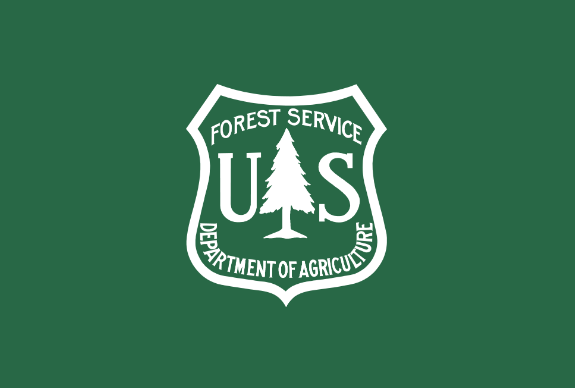Greer Spring
When you pull into this parking lot it’s easy to find the trailhead which starts you on the downhill, .9 mile hike to the Greer Spring. Don’t forget to stop at the restroom before you head down the hill. Even though it’s a short hike, bring plenty of water to drink, especially in summer months.
Greer Spring is the second largest spring in Missouri. Greer Spring flows from two outlets about 250 feet apart at the bottom of a steep, shaded ravine at the terminus of the trail. More like the emergence of an underground river, the water feeding Greer Spring comes from nearby streams that flow underground, as well as sinkholes found to the west and north-west of the spring, as far as 35 miles away.
The spring flows from the mouth of Greer Spring Cave, which is the mouth of the spring branch, and boils up from the rugged bed of the stream. The spring run drops 62 feet in elevation for 1.25 miles where it more than doubles the flow of the Eleven Point National Scenic River where they join.
The .9 mile trail to the spring travels through a mixture of hardwoods and pines. The overstory of trees, includes a variety of oaks, shortleaf pine, hickory, maples, basswood, and black gum. Hikers will also see flowering dogwoods, sassafras, persimmon, hazelnut, cedar, and hackberry.
Rock formations along the spring and spring branch canyon inspire many photographers. Flowing down a rock filled canyon for one mile, the spring branch enters the Eleven Point River. There is no fishing, boating, floating or wading allowed in the spring branch.
Active Alerts
General Information
Camping at Greer Crossing Recreation Area
16 single and 3 double sites with tables, fire rings, lantern posts, seasonal drinking water/ trash bins, vault toilets.
RV Camping
No hookups available at this location.
Size Restrictions
Vehicle + towed Trailers cannot exceed 60" in length.
Pavement Type of Parking
Asphalt
January - December
Day Use Hours from 6 am to 10 pm
On the Trail
- Foot Traffic only on trail.
- No motorized vehicles are permitted.
- Swimming, wading, and floating is prohibited in the spring and spring branch.
- Pets must be kept on a leash at all times.
- Both camping and campfires are prohibited.
At the Trailhead and Spring
- No overnight camping in day use areas at any time of year.
- Dogs must be on a 6 foot leash in the day use area
- No trash containers; please pack out all your trash.
- Fireworks are prohibited.
- Please don’t damage the historic structures.
There is a Forest Order for this area with more specific restrictions. Please read the Order before visiting Greer Springs.
When Visiting the Eleven Point Wild and Scenic River
On The River
- Follow the Leave No Trace Principles
- No glass or polystyrene on the river.
- The river can rise rapidly, be aware of changing conditions.
No fees are required for this site
Boating
When boating with your dog, follow all Missouri State boating laws.
- Use care when getting your dog in and out of the boat to ensure their safety.
- Consider both you and your dog wearing a life jacket.
- Provide shade for your pet.
- Remember to bring their food and water as it may be unsafe for them to drink lake water.
Camping
- Keep dogs on a six-foot, or shorter, leash when they are not inside a tent.
- Store dog food in bear-resistant containers and feed your pet away from the campsite.
- Pick up and bag your dog’s waste. Place it in a provided trash receptacle or pack it out.
- Do not leave your dog unattended at any time.
- Keep your dog in your tent at night.
- Ensure that there is ample water available for your pet.
Trail Use
Dogs are allowed on hiking trails, as long as they are kept on a leash. Unleashed dogs can pose a danger to your pet, the natural resources of the area, and other forest visitors.
Wildlife
- Do not allow them to interact with wildlife
Address: #66 Confederate Ridge Road Doniphan, MO 63935
Phone: 573-996-2153
Hours: 8:00 am - 4:30 pm, Monday to Friday; District Offices closed 1 - 1:30 for lunch (Closed on federal holidays)
Office Email: sm.fs.marktwainnf@usda.gov
Getting There
Latitude / Longitude
Latitude: 36.77967
Longitude: -91.345227
Directions
From Winona, MO
- From the junction of US 60 and Missouri Highway 19 travel 18.1 miles south
- The site is located on the right side of the road.
Parking
12 vehicles
Facility and Amenity Information
Accessibility
The toilets are accessible.
The trail to the spring is relatively smooth, however there is a moderately steep incline down to the spring.
Restrooms
Restrooms are available at this site.
Water
Potable water is not available at this site.
No drinking water is available at parking areas or along the trail; bring what you will need, or be prepared to sterilize water you find.
Nearby Trails
Recreation Opportunities
Day Hikes Info
The 0.9 mile trail to the spring is relatively smooth, however there is a moderately steep incline down to the spring.
Elevation desc
Varies; trail descends about 250 feet in the 0.9 mile length.
Viewing Scenery Info
Greer Spring is the second largest spring in Missouri. Its average daily flow of 222 million gallons more than doubles the size of the Eleven Point National Scenic River into which it flows.
Viewing Plants Info
The trail starts in a pine/oak-hickory forest and ends at Greer Spring. Along the way the trail passes through several forest types containing
- oaks,
- hickories,
- shortleaf pine,
- basswood,
- yellow poplar,
- flowering dogwood, and
- sugar maple.
Spring wildflowers are in abundance from March through mid-June. A few of the spring wildflowers that can be seen along the trail and in the deep valleys surrounding Greer Spring:
- Jacob’s ladder,
- Virginia waterleaf,
- hepatica,
- harbinger-of-spring,
- Jack-in-the-pulpit, and
- yellow trout lily
On the ridgetops wildflowers can be seen scattered throughout the forest, such as
- Indian pipe,
- bird’s-foot violet,
- downy phlox, and
- firepink
Asters and other fall flowers rival the autumn leaves for beauty.
The area around the spring has a lush growth of many types of ferns, mosses and liverworts. Common hydrangea, Bishop’s cap, wild columbine, and Ebony spleenwort are some of the plants that can be found growing on the dolomite cliffs surrounding Greer Spring.
In its waters or along its banks can be found horned pondweed, elodea, water speedwell, and water thread pondweed.
Within this wide and varied landscape there exists a diverse array of plants. Of the roughly 2800 species of plant in Missouri, about two-thirds can be found on the Forest. While most can be found commonly throughout the Forest, less common species can be found in specific natural communities such as calcareous fens, acid seeps, and glades (limestone, dolomite and igneous).
What to look for
- Native - MDC Field Guide
- Threatened, Endangered and Candidate Species - Mark Twain | MDC Species
Viewing Wildlife Info
This is a great area for birding. You may see Otters.
The ultimate wildlife viewing experience is watching animals in their habitat. Here are some helpful tips to become a wildlife friendly viewer:
- Use the right tools - A field guide, a pair of binoculars and a camera. Wear clothing that is appropriate for the season and activity.
- Watch at dawn and dusk - This is the time when most wildlife species are active enough to view.
- Keep your distance - Maintain a distance that is comfortable for the wildlife.
- Stay quiet - Move slowly and quietly to increase your chances of viewing wildlife, and to avoid stressing the animals you wish to watch.
- Do not feed the wildlife - There is plenty of food available in the wild. Human food can cause digestive problems, provide improper nutrition, and even kill an animal.
An online version of the Missouri Wildlife Viewing Guide is available on their website
Recreation Groups
The Eleven Point National Wild and Scenic River meanders through the picturesque Ozark hills of southern Missouri.






